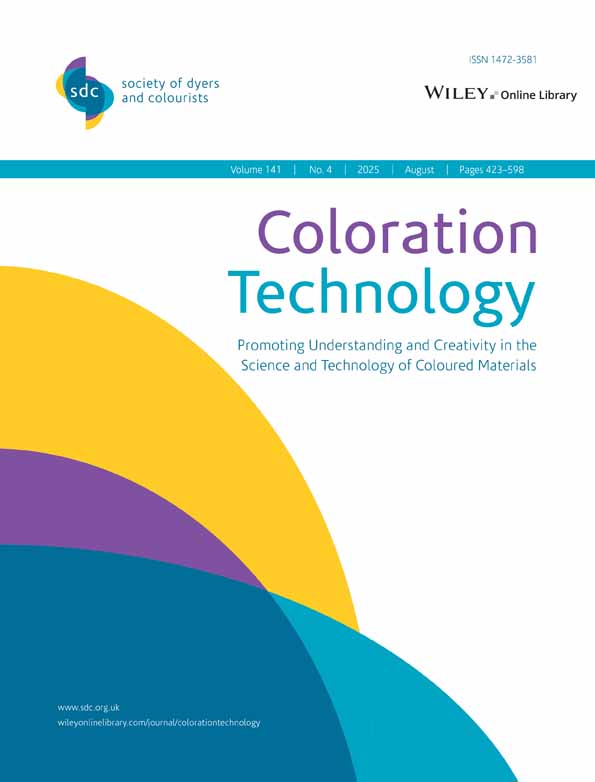Ink-jet printing for diacetate fibre with different fixation methods
Abstract
Diacetate fibre is a completely degradable synthetic fibre that combines the lustre and comfort of silk with the stability of polyesters. Pure diacetate fabric is ink-jet printed using methods similar to those for polyesters. However, the K/S value of the printed fabric differs significantly from that of polyester, hindering the applications of this biodegradable acetate fabric. This article investigated ink-jet printing methods for diacetate fabric with steaming fixation and baking fixation methods. Three pre-treatment methods were chosen to size the diacetate fabric. The pre-treated acetate fabric was steamed or baked at different temperatures and times to determine the proper fixation temperature and time. Laser Raman mapping was used to probe the dyes diffusion in acetate fibre with different printing methods. The results showed that the baking fixation resulted in a higher colour yield for printed diacetate fabric compared to steaming fixation. The laser Raman mapping indicated that the baking method (200°C, 60 s) can more effectively promote the diffusion of disperse dyes into the fibres compared with steaming process (135°C, 30 min). Colour fastness, including washing soap fastness and rubbing fastness, for the printed diacetate fabric were all above level 4. Both printing methods could produce satisfactory printing products, which can help broaden the application prospects of diacetate fibre fabrics.
CONFLICT OF INTEREST STATEMENT
None of the authors have a conflict of interest to disclose.
Open Research
DATA AVAILABILITY STATEMENT
Data sharing not applicable to this article as no datasets were generated or analyzed during the current study.




